“Catch a falling star and put it in your pocket,” sang Perry Como many years ago, “save it for a
rainy day ….”
Well, rainy days in Paleochora have been few and far between recently, and with little chance of any more between now and September or October. But with little or no light pollution, especially away from the town itself, this is a wonderful place to watch ‘shooting stars’ or meteors, especially in mid-August, the annual occurrence of the Perseid meteor shower, which this year reaches its peak on the night of 12th/13th August.
In recent years it’s become a custom of mine, on “Perseids night”, to kayak out of Paleochora at dusk and spend the night on an empty beach, usually paddling east to one at Ianniskari (Anidri), then lying under the stars to watch the meteors, at regular intervals, streaming through the night sky and seemingly falling into the Libyan Sea.
Last August, for a change, I kayaked west, leaving the tiny harbour at Koundoura at 7pm, heading for Akrotiri (cape) Krios, and the tiny inlet known as Kokkino or “red beach.”
It took me an hour, passing south of Krios beach, below the awesome sheer cliffs of Cape Krios, and close to the sanctuary of Viena, to run ashore at “Red” beach.
En route was a new discovery – a sea cave only accessible to small craft, its features formed and eroded over a million years, and visible to few.
Red beach gains its name from the masses of dark red stones along the shoreline, possibly old pottery worn smooth by the sea over centuries.
The sun set beyond Elafonisi as I quickly “made camp”, simply throwing down a sleeping bag on top of an insulation mat.
Leaving Koundora I had asked a returning fisherman about the coming weather, their predictions being far more accurate than any TV or Internet forecasts. “Calm sea, Beaufort 2, maybe 3 tomorrow,” he advised – ideal conditions for me, as Force 4 and beyond is too dangerous at sea. So it was disturbing to see flashes of lightning, and an imminent storm, in the far west, maybe 400km away out at sea. These, but with no thunder, were to continue all night.
With no moon, the planet Venus and a million stars gradually appeared. The closest star system to earth is Alpha Centauri, 4.3 light years and some 40 trillion km away, but can only be seen in the Southern Hemisphere. Here in Crete the nearest is Sirius (the ‘dog star’) in Canis Major, at a distance of 8.6 light years. Twice the mass of our sun, Sirius is the brightest star in the earth’s night sky. Time for reflection as I lay back waiting (and not for too long) for the first of the meteors. On a good night, there can be between 50/100 per hour, emanating from the constellation Perseus, some leaving a seconds-long train, before burning up c.100km above earth.
Some I missed by looking the wrong way (to the NE is the best direction), some by falling asleep (and pre-dawn is the best time to watch), but the night was spectacular. When I woke up it was already early daylight – so, “time and tide, etc …” and I was soon up and away, calling in at Viena to chat with a lone camper there, also a meteor watcher.
The first rain fell as I loaded the kayak onto the roof-rack back at Koundoura, and half an hour later it was torrential, strangely falling heavily on a calm sea, but by mid-afternoon the sun was blazing, with temperatures again in the mid-30s. Climate change indeed ….
Footnote: Red/Kokkino beach can be reached on foot off the E4 path between Elafonisi & Krios,
just north of Agios Ioannis church.

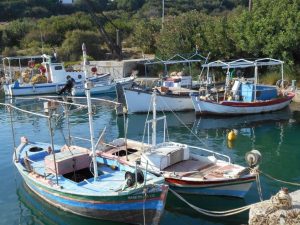
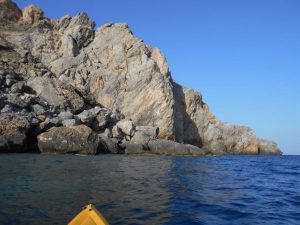
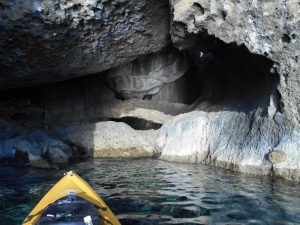
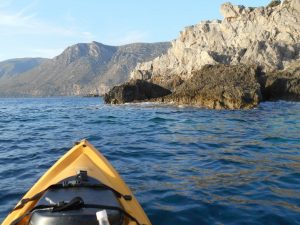
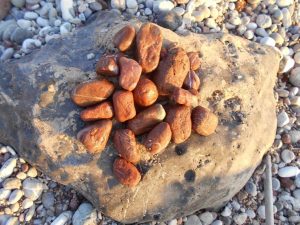
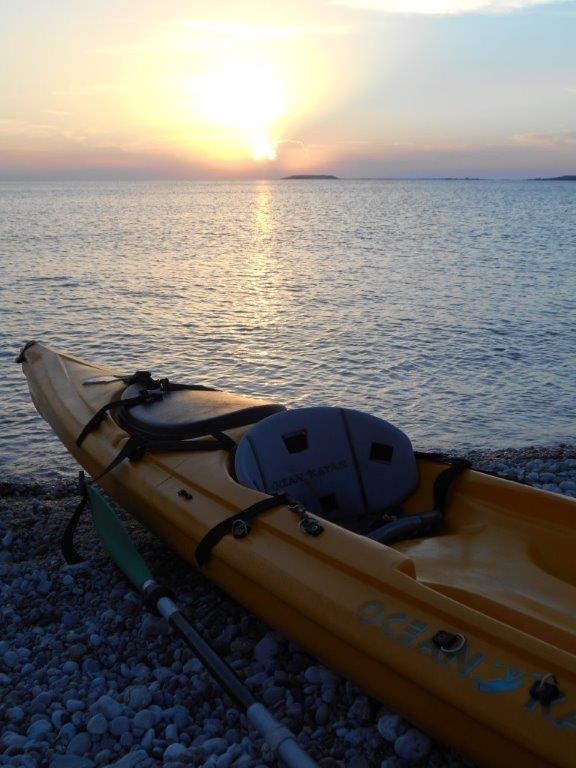
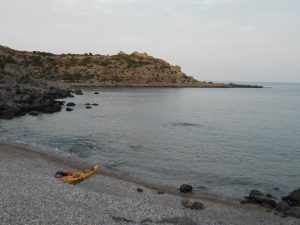
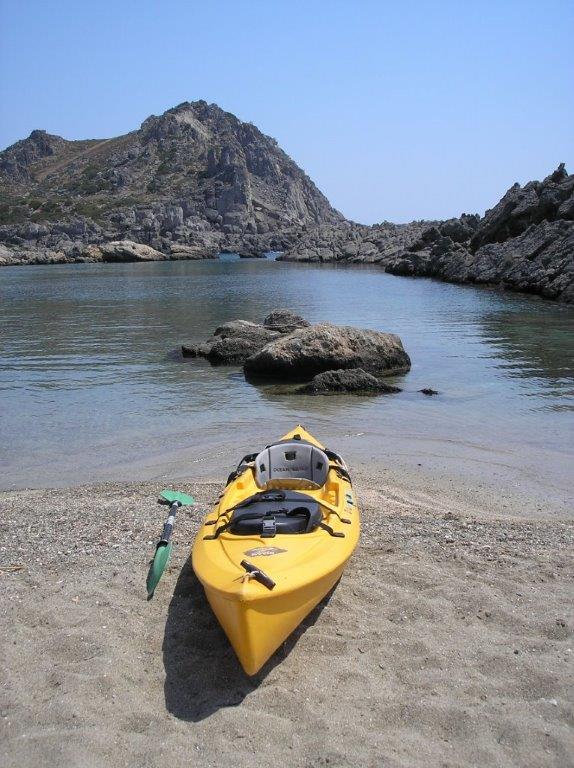

Recent Comments